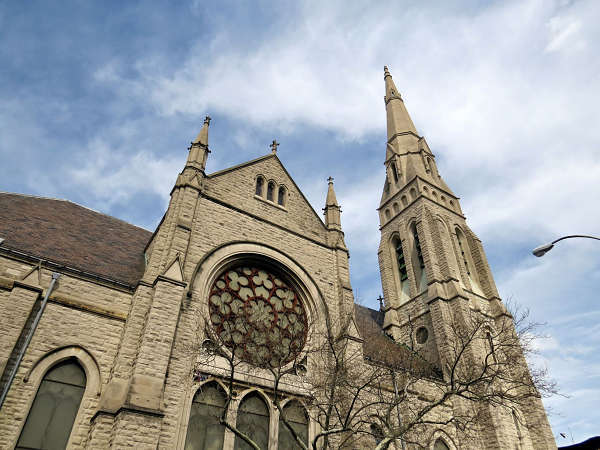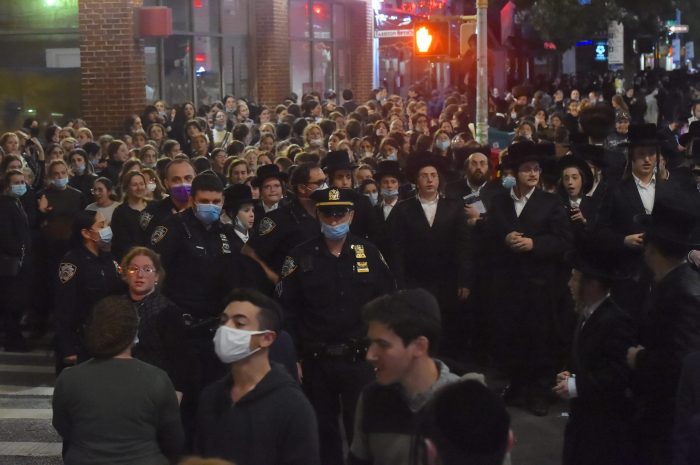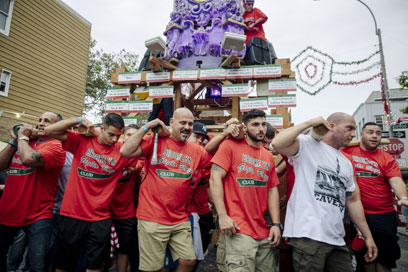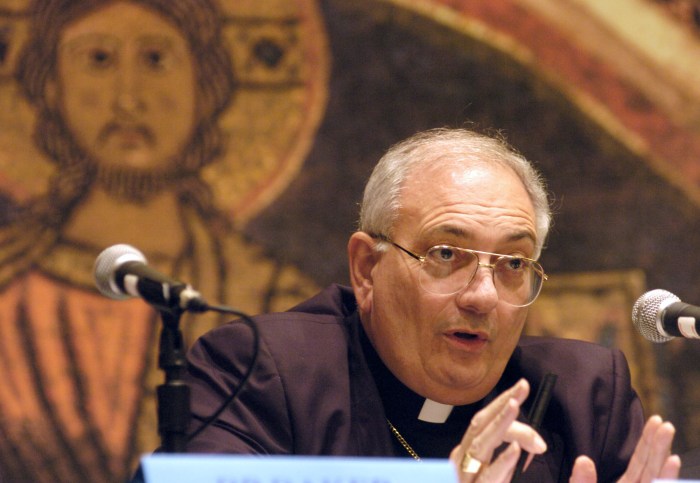The Brooklyn Diocese has filed a federal lawsuit against New York State in response to Gov. Andrew Cuomo’s “wrong-headed” executive order limiting the capacity at religious institutions in parts of the city, arguing that the mandate violates their religious freedoms.
“The State has completely disregarded the fact that our safety protocols have worked and it is an insult to once again penalize all those who have made the safe return to Church work,” said Bishop Nicholas DiMarzio in a statement.
The lawsuit comes just one day after Cuomo issued an executive order reducing the number of congregates allowed inside religious buildings in places designated as COVID-19 hotspots, which includes large swaths of central and southern Brooklyn.
Under the governor’s color-coded scheme, houses of worship in the most concerning “red zones” can allow entry to just 10 people at a time, while the adjacent “orange zones” can permit access to only 25 worshipers. On the outer edges of hotspots, churches in “yellow zone” areas can operate at 50 percent of their normal capacity.
The Diocese operates nine Brooklyn parishes within the borough’s red zone, and has taken several steps to enforce mask wearing and social distancing guidelines ever since they were first allowed to reopen in June — making the new regulations overly onerous and misguided, argued the Diocese’s legal counsel.
“Public officials have a sacred duty to do right by those they serve, but this is simply wrong and wrong-headed,” said Randy Mastro. “If this latest executive order stands, parishioners won’t be able to go to Mass this Sunday, even though the Diocese has done everything right to ensure safe conditions in its churches.”
Cuomo’s targeted approach to new health measures came after six Brooklyn ZIP codes had seen a positive test rate of above 3 percent for over seven days, which sent city and state officials scrambling to address the “cluster” before it spread further throughout the Five Boroughs.
“We have mapping software so you can see exactly where the cluster is. That’s where the highest density of cases is, and that’s where you have to take the most dramatic actions,” said Cuomo. “When you see the cluster, you have to stop it at that point.”
Diocese officials countered Cuomo’s logic, however, saying that a 10-person capacity limit seems to be arbitrary and draconian — particularly because no significant outbreak in New York has yet been traced back to church attendance.
“Our churches have the capacity to accommodate many worshippers, and to reset our attendance capacity to 10 people maximum in the red zone, and 25 people in the orange zone, when we have had no significant cases, impedes our right to worship and cannot stand,” DiMarzio said.
The legal maneuver, which the Diocese filed on first amendment grounds, now heads to federal court, where they have asked a judge for an injunction that would stop government officials from enforcing Cuomo’s constraints, said Mastro.
“This religious community will be denied its most fundamental right — the free exercise of religion — for no legitimate reason whatsoever,” he said.
The Catholic church isn’t the only religious group infuriated by the new restrictions. Four elected officials of the majority Orthodox Jewish Borough Park released a scathing joint statement on Oct. 6 calling the restrictions “a choice to single out a particular religious group.”
“It is disgraceful that Governor Cuomo would impose these restrictions targeting our community in the midst of our Jewish holidays,” wrote Councilmen Kalman Yeger and Councilman Chaim Deutsch, Assemblyman Simcha Eichenstein, and state Senator Simcha Felder.
The restrictions on religious gatherings has spurred two nights of protests on the streets of Borough Park — where at least two Hasidic dissenters were assaulted, and one was critically injured.
This story first appeared on our sister publication brooklynpaper.com.


































